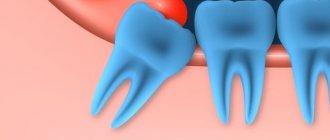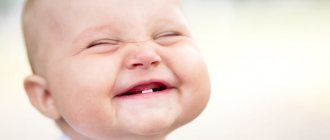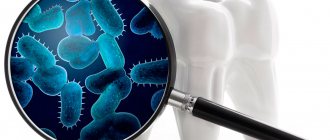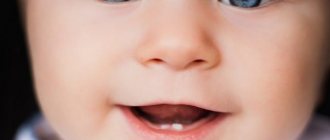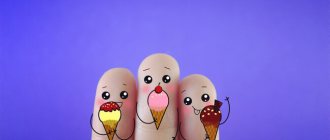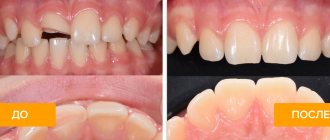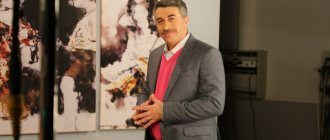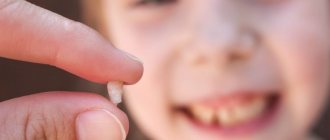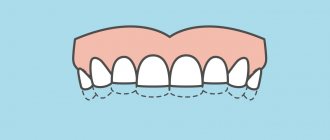The period when a child exchanges baby teeth for permanent ones is very exciting. Both kids and their parents are very worried, and the tooth fairy helps make this time a little more magical and a little more fun.
It is believed that the tooth fairy comes to children at night, takes away baby teeth, and leaves a coin in return.
But, you must admit that a coin is very banal and boring, it is better to surprise the baby with a small gift, and today we will talk about what surprises to please the baby.
Princess doll
The girl will be delighted to receive a beautiful princess doll as a gift from the tooth fairy. Select:
- any of the Disney princesses or several dolls at once and a couple of sets of stylish clothes to go with them;
- a special doll for hairstyles. Hair dyeing kits are sold separately for them, as well as many hairpins and elastic bands to create an incredible look for the doll.
It is worth noting! If you play the role of the tooth fairy, then you shouldn’t limit yourself to miniature gifts, putting them under your pillow instead of a tooth. Place a surprise near the bed, explaining that the fairy did not want to wake up the baby and therefore did not put the gift under the pillow. Come up with a worthwhile excuse and give a gift of any size!
Parents are stumped by the question of what the Tooth Fairy does with children's teeth (Reddit helped them)
However, unlike Santa Claus, little is known about the origins and biography of the Tooth Fairy. Recently, Reddit user ThePookaMacPhellimy reached out to the community after his daughter wrote a letter to the fairy and asked where she put her acquired teeth.
“My wife and I laughed terribly because all the options that came to our minds were very creepy,” the author of the post wrote and gave several examples. - “Makes something out of them. Turns them into magic dust, which helps children's teeth grow faster. Grinds them up and puts them somewhere in the form of powder. He’s hoarding them for some unknown purpose.” ThePookaMacPhellimy asked Reddit users for help, and they came up with a lot of funny (and creepy, whatever) answers.
“I keep them in a special small box, and when you lose your last tooth, I give them to your parents as a good memory. By the way, I don’t pay for dirty teeth” (Mrs-Mighty-Red-Oak).
“My mom made up a whole story about the Tooth Fairy! Her name was Annabelle and she and other fairies collected teeth to fight the Moon Giants" (ThrowRAVueveDeExcess).
"Uses them to build his castle" (vermilliondragon).
“My parents told me that teeth are used to make piano keys” (sparrow_fifi).
"I don't take them away, I enlarge them and put them back so they grow back into molars" (Shrimpy_McWaddles).
“Throws them into the sky where they become stars” (Woody716).
“We tell our kids she eats them and leave a note like, ‘thanks for the healthy sample, it was delicious.’” (hey_you_are_amazing).
“We asked Google and it said she recycles them and gives them to the kids. We thought it was creepy, but the child decided that everything was logical” (sequoia_summers).
“You wouldn’t believe how much they can fetch on the ivory market” (ThatOneWritingPerson).
“Have you ever heard of a study that used baby teeth to demonstrate that the human body is capable of storing radiation? They collected 320 thousand teeth to conduct this study. So the Tooth Fairy is a scientist” (tectonicus).
“I don't exist, your parents give you money as a sign of tradition to help you cope with the shock of losing your own tooth” (PsyPup).
“She plants them in her garden to grow more teeth... or smiles” (onwardknave).
“Sells them to paint companies so they can put them in cans” (branluvr).
“She gives them to cubs who have holes in their teeth from eating too much candy.” (chocolatedessert)
After some time, the author of the post added that he and his wife decided to go with the option “the tooth fairy turns old teeth into magic dust to help your little sister grow her teeth.”
This case is not the first time when parents had to not only leave money under the pillow, but also write letters to their children on behalf of the Tooth Fairy (they talked about one such case here). And in general, what parents don’t do with their children’s baby teeth - see for yourself.
Special project
Tooth Fairy Game Ideas
Many countries around the world have unique traditions to celebrate the loss of a child's baby teeth, but the legend of the tooth fairy is believed to have originated in the United States in the early 1900s. This tradition remains popular, even today, many parents are looking for fun, creative ideas to help them celebrate their child's loss of baby teeth using the story of the tooth fairy.
How to determine what a child expects from the tooth fairy?
Baby teeth usually begin to fall out in children between the ages of 5 and 7 years. By the time all 32 permanent teeth erupt, a child will have lost 20 baby teeth. Before a child's first tooth falls out, parents may want to determine what the child can expect from the tooth fairy. Delta Dental conducts an annual tooth fairy survey to track the amount of fees left by the tooth fairy. Over the past 10 years, this amount has fluctuated between $1.50 and $2.50. Also, the trend identified by the survey indicates that the cost of a tooth actually rises and falls in direct proportion to the economic situation in the United States.
To further assist parents, Visa has developed the Tooth Fairy Calculator app, which allows you to find out the average cost of a tooth by region by entering geographic and demographic information. The calculator also provides the current fee equivalent to what the parent would have received as a child.
Maintaining Belief in the Tooth Fairy for Better Oral Care
Creative ideas for playing tooth fairy can also include teaching oral hygiene and brushing skills. Using notes from the tooth fairy can reinforce the importance of daily hygiene routines to your child and be a fun way to remind them to brush and floss their teeth. Printed recipes and notes from the tooth fairy can be found online, or you can write them yourself using note paper and glitter to create the appearance of fairy dust and make the note more authentic.
Tooth hiding places are another popular item associated with the visits of the tooth fairy. One option could be small chests. To prevent your child from losing a lost tooth before the tooth fairy comes to pick it up, you can use tooth-shaped pillows or monogram pillows that have pockets to store the lost teeth.
Unforeseen circumstances affecting the arrival of the tooth fairy
Sometimes a child can lose a tooth without even noticing it. In this case, he can, with your help, write a short note to explain what happened to the tooth fairy and perhaps suggest places where she can find the tooth (school, playground, etc.). Also, on particularly restless nights, the tooth fairy may not have loose change on hand - especially if a tooth falls out right before bed - and will be forced to leave the child an IOU. Explain to your child that many children his age lose teeth, sometimes on the same day. Therefore, it happens that the tooth fairy forgets about the visit or simply does not have time to get to your home. A simple explanation and the promise of a reward the next night is usually sufficient.
Ideas for Playing the Tooth Fairy in Exceptional Circumstances
It happens that a baby tooth falls out prematurely due to an accident or injury. And sometimes a baby tooth refuses to fall out and you have to shake it in the dentist’s office. Such special occasions require extra attention and care from parents, as well as from the tooth fairy. The tooth fairy may send an encouraging letter and treat to praise your child for showing courage in the dentist's office. Comforting a child who has undergone a dental procedure will help ease fears and provide an opportunity to discuss the experience with them at their level of understanding.
What problems do children and their parents face when replacing baby teeth with molars?
As mentioned above, first the root of the baby tooth is absorbed. In this case, the loss occurs painlessly on its own or under the influence of external signs (constant loosening by the child or eating fairly solid food). But it may also happen that the root of the tooth has not yet been sufficiently absorbed, the baby tooth has not yet fallen out, but the molar has already begun to grow. If you do not consult a dentist in time to remove a tooth that is interfering with natural growth, a significant malocclusion may occur: a molar may simply grow next to the baby tooth. Such changes in the oral cavity may be accompanied by an increase in body temperature and significant pain.
Another significant problem is teeth falling out too early. It can be caused by various gum diseases or physical trauma. If you do not seek advice from a specialist in time, the gums may become overgrown at the site of tooth loss, which will subsequently prevent the eruption of a molar at this site and the curvature of the dentition. In this case, they usually resort to prosthetics. A structure made of hypoallergenic materials is installed on the damaged area, completely identical in appearance to a natural tooth. It maintains the child’s neighboring teeth in an even state, preventing the formation of an incorrect bite.
Another significant problem is the delay in tooth loss, when the molar is already beginning to erupt, but the milk tooth is still quite firmly “sitting” in its place. This may be due to a lack of nutrients, delays in the development of the body in general and the oral cavity in particular. In this case, you should contact a dentist, who will examine the little patient in detail and prescribe the necessary measures. In most cases, the tooth that is preventing growth is simply removed. In this case, local anesthesia is used, which will make the process of tooth extraction almost painless.
Newly erupted molars are not yet strong enough; their tooth enamel is thinned. Therefore, during the period when baby teeth are replaced by molars, there is an increased risk of acquiring dental diseases. The most significant of them is caries. It can occur due to poor oral hygiene and consumption of large amounts of sweet foods. If caries is not treated in time, complications in the form of pulpitis and other dangerous dental diseases are possible. There is also a possible risk of damage to the oral cavity during this period by various types of infections, which often lead to inflammation of the gums and loss of newly grown teeth.
Replacing baby teeth with molars is a very important process for a child. Parents should do everything possible to make it enjoyable and painless. Therefore, it is very important to visit the pediatric dentist on time.
Why does the tooth fairy collect teeth?
A superstition associated with witchcraft stretches back from the Middle Ages - possessing someone else’s tooth can give power over the person to whom it belonged (therefore, especially superstitious inhabitants of the Dark Ages preferred to burn lost teeth rather than give them to a fairy, who was also considered by the church to be a lesser demon).
A not-so-kind version of the tooth fairy from Hellboy 2
This suggests a logical conclusion - for a small fee, tooth fairies gain power over a huge number of people. What some modern postmodernist creators recall - for example, Terry Pratchett in the book “Santa Hryakus”.
However, usually the tooth fairy is a positive character and does not use children’s teeth to gain world domination. You can often come across the version that she collects teeth in order to maintain children's faith in fairies. After all, if they stop believing in her, she will disappear. This option is described in the cartoon “Keepers of Dreams”.
A less popular, although also quite obvious reason is shown in the French cartoon about the French analogue of the tooth fairy “Ernest and Celestine” - mice collect teeth in order to build their underground cities with their help - their entire civilization literally stands on children’s teeth.
When do baby teeth start falling out?
Baby teeth begin to form while the baby is still in the mother's womb. Moreover, their number is not 32, as in an adult, but only 20. Baby teeth usually fully erupt by the age of 2. At the age of approximately 6 years, the replacement of baby teeth with permanent teeth begins to occur. In this case, 20 existing teeth fall out, and the remaining 12 erupt. This usually happens in the following order:
- The deciduous incisors are usually the first to fall out. The roots of the teeth begin to thin out, and when the baby reaches a certain age, the incisor falls out. For central incisors it is 6 years, for lateral incisors - 7 years.
- Then the molars begin to fall out. These baby teeth are divided into first and second teeth. Loss of first molars occurs between 7 and 10 years of age. The second molars are the last to fall out, between the ages of 9 and 13.
- In the interval between the loss of the first and second molars, loosening and loss of the upper and lower canines occurs. This occurs between the ages of 9 and 11 years.
It should be remembered that the process of replacing baby teeth with molars is individual, and the indicated timing is not necessarily suitable for all children.
How much does the tooth fairy pay?
(Do I need to clarify that the price for teeth is determined by parents?)
Mythology does not specify the exact price, but it is said that the fairy leaves one coin for one tooth. And money in coins in our time is much less than money in papers...
In 2013, the Visa company (the same one that produces payment cards) conducted an interesting study, during which the exchange rate of the teeth of small American capitalists in relation to the dollar was clarified - on average, a fairy leaves a child 3.7 dollars, that is, about 280 rubles in modern terms course.
